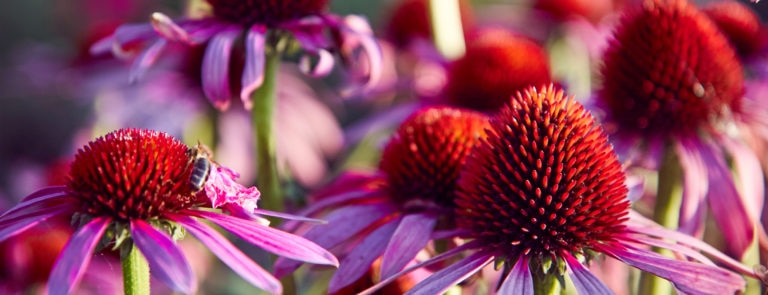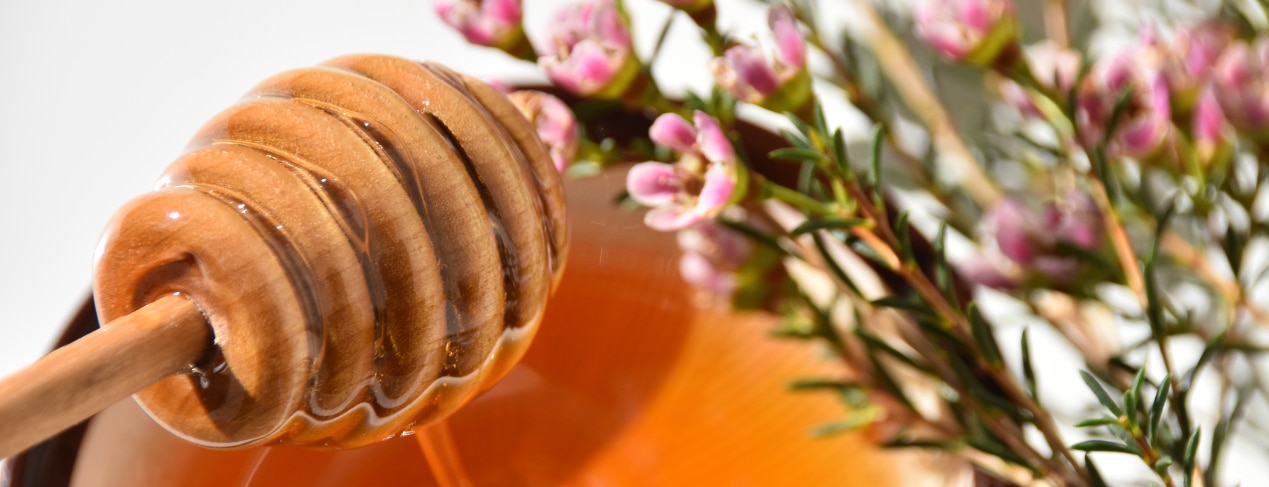20% off €35
The benefits of echinacea

The echinacea plant, also known as American coneflower, or purple coneflower, is a wild flowering herb known for its medicinal properties based on traditional use.1
Echinacea is native to North America and is recognisable by its daisy-like flowers, usually purple, around a spiny, cone-like centre. It can also grow well if planted in sunny spots in UK gardens.
Originally used by the indigenous Native Americans, echinacea has been used as a traditional herbal remedy since the 18th century for a range of conditions from coughs and colds, snake bites, burns, anthrax infections and minor wounds.2
The echinacea root was also reportedly chewed to ease the pain from toothaches and throat infections.3
These days, echinacea is used across the world to relieve the symptoms of the common cold (based on traditional use only).
Applied directly onto the skin, certain preparations are also thought to help with healing small skin wounds.4
The three types of echinacea used in herbal medicines are:5
- Echinacea purpurea
- Echinacea pallida
- Echinacea angustifolia
The most widely used and popular species of echinacea is echinacea purpurea.
Echinacea benefits
What does echinacea do in the body?
Today, echinacea is classified as a traditional herbal remedy by the British Herbal Medical Association (BHMA) for the relief of symptoms of the common cold as well as influenza type infections.
The immune-boosting properties of echinacea are down to the natural plant compounds polysaccharides and alkamides.6
Usages are based on traditional use only, which means that the effectiveness is not guaranteed as it’s based on anecdotal evidence over many years, rather than solid scientific research.
However, echinacea, particularly echinacea purpurea, has been the subject of research studies over the years, with promising results.
Here are the two main uses for echinacea and the evidence available to back them up.
-
Common colds and flu-like illnesses
Echinacea is best known for its supposed ability to relieve colds and flu-like infections and for helping to shorten the duration of such illnesses.
A 2007 review of the available studies published in the medical journal The Lancet found that echinacea can decrease the frequency and length of the common cold.7
A 2013 review found no statistically significant reduction in the number of colds but did find that taking echinacea had a preventative effect.
The fact that there was no statistically significant reduction in the number of colds over several studies could be due to the fact that different strengths and preparations were used across the studies.8
Echinacea has also been shown to have an anti-inflammatory effect inside the body.9
-
Treatment of minor skin issues
Echinacea is thought to be potentially effective in protecting the skin from irritation and oxidative stress.
One study published in the International Journal of Cosmetic Science in 2010 found that the echinacea purpurea cream and gel were effective in improving skin hydration and reducing wrinkles.10
Echinacea in the form of a cream or gel has also been used topically for soothing minor cuts, grazes and bruises.11
One study found it helped reduce levels of bacteria-induced inflammation, a cause of acne.12
How to take echinacea: Dosage
Echinacea is available as echinacea tablets, echinacea drops, echinacea tea, echinacea liquid or as a cream or ointment.
For tablets, the usual dose is one 140mg tablet of echinacea purpurea root extract twice daily.
However, the dosage varies depending on which plant species and part of the plant has been used – make sure you read the label carefully.
Experts think echinacea is most effective when taken at the first signs of a cold, but it may also have an impact when your cold is in full swing.13
Some people take echinacea throughout the UK cold and flu season from November to March as a preventative measure.
The following groups should not take echinacea:
- Children under 12 years old – there is a risk of serious side effects14
- Pregnant and breastfeeding women – scientists are not sure this is safe15,16
- People with diabetes or an immune system disorder, for example auto-immune disease – they should avoid a herb that could further stimulate the immune system17
Echinacea side-effects
If you’re interested in taking echinacea, talk to your GP. There are no current known interactions with other medications, but side-effects have been reported.
Serious side effects to echinacea are rare, but some more common ones include stomach upsets, nausea and dizziness.18
Echinacea is considered safe to take although some of the liquids may contain alcohol – if you are dependent on alcohol, or liver disease or epilepsy, look out for the herb in a different form.
For children under 12, the side effects of taking echinacea are more serious. These include:19
- allergic reactions, like skin swelling and hives
- facial swelling
- shrinking of the airways
- in extreme cases, asthma and anaphylactic shock
Last updated: 17 September 2021
- https://www.nccih.nih.gov/health/echinacea
- https://plants.usda.gov/plantguide/pdf/cs_ecpu.pdf
- https://pubmed.ncbi.nlm.nih.gov/12808356/
- https://www.ncbi.nlm.nih.gov/pmc/articles/PMC2763438/
- https://pubmed.ncbi.nlm.nih.gov/16102249/
- https://bhma.info/herbal_store_echinacea/
- https://www.thelancet.com/journals/laninf/article/PIIS1473-3099(07)70160-3/
- https://www.cochrane.org/CD000530/ARI_echinacea-for-preventing-and-treating-the-common-cold
- https://pubmed.ncbi.nlm.nih.gov/19107735/
- https://pubmed.ncbi.nlm.nih.gov/20384903/
- https://www.gov.uk/government/publications/herbal-medicines-granted-a-traditional-herbal-registration-thr/herbal-medicines-granted-a-traditional-herbal-registration
- https://pubmed.ncbi.nlm.nih.gov/20830697/
- https://www.ncbi.nlm.nih.gov/pmc/articles/PMC4068831/
- https://www.nhs.uk/news/medication/echinacea-allergy-warning-for-children-under-12/
- https://www.sps.nhs.uk/articles/is-it-safe-to-take-herbal-medicines-during-pregnancy/
- https://www.ncbi.nlm.nih.gov/books/NBK501810/
- https://jamanetwork.com/journals/jamadermatology/fullarticle/480602
- https://pubmed.ncbi.nlm.nih.gov/12537169/
- https://www.nhs.uk/news/medication/echinacea-allergy-warning-for-children-under-12/



